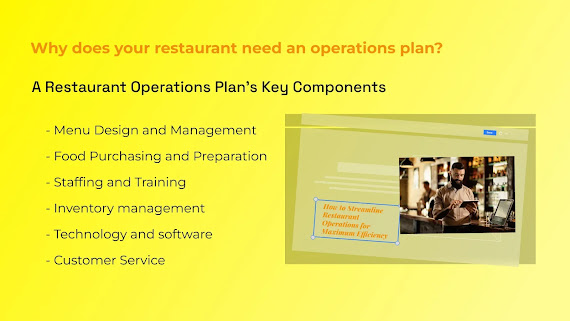Everything You Need To Know About Soft Openings For Restaurants
After securing a location, assembling a team, and finalizing a menu, the only remaining task is to open your restaurant's doors. But where do you start?
Soft openings offer an excellent way to test and refine your processes before officially unveiling your restaurant to the public. Whether you're aiming for a local buzz or just want to fine-tune your operations, we've compiled everything you need for a successful soft opening.
What is a Soft Opening?
A restaurant soft opening involves initiating operations for a select group before the official public launch. Think of it as a practice period comprising invite-only days or a series of events designed to test operations and create marketing buzz before the grand launch. This phase may involve operating for limited hours or with a reduced menu and might not have your full team on board. Soft openings typically last a few days to a few weeks to incorporate feedback and address any last-minute issues.
Advantages of a Soft Opening
While not obligatory, hosting a soft opening comes with several benefits:
- Collect Feedback: Gather valuable input on cuisine, drinks, service, and overall atmosphere from patrons.
- Logistics Testing: Examine seating capacity, room flow, point-of-sale systems, and kitchen equipment.
- Team Preparation: Allow staff to practice menu knowledge and service skills for consistent performance.
- Create Excitement: Generate buzz about your new establishment by encouraging guests to share their experiences.
- Make Adjustments: Incorporate feedback and make necessary adjustments before the official opening.
Disadvantages of a Soft Opening
It's crucial to be aware of potential drawbacks:
- Creates Urgency to Open: Soft openings should align with a set grand opening date to maintain excitement.
- Exposes Ideas to Competitors: Ideas shared during a soft launch may be adopted by competitors if the grand opening is delayed.
- Low-Quality Feedback: Friends and family attending a soft opening may provide biased feedback; consider inviting a diverse audience for more objective opinions.
When Should You Host a Soft Launch?
Choose your soft launch date with the grand opening in mind. Ideally, there should be a short gap between the two, typically a few days to a week. This allows sufficient time to address any significant findings from the soft opening.
How Do I Prepare for a Soft Launch?
While each restaurant is unique, some common factors demand attention in preparing for a soft launch, including menu planning, pricing, timeframes, and guest lists. Create a rough timeline to stay organized.
Plan Your Menu
Consider these five questions during meal planning:
- Full or Limited Menu?
- Menu duration (single or multiple days)?
- Offerings details.
- Portion quantities.
- Specialty dishes.
- Limited Menu: Focus on providing an excellent experience with a smaller menu, clearly communicating that this is a test run.
- Full Menu: While quicker to start, managing a full menu can lead to stress and errors. It's also challenging to pinpoint issues.
Choose a Time Frame
Decide whether your soft opening will be one significant event or several smaller ones over days or weeks. The duration depends on factors like budget and opening timeframes.
Select Your Pricing Strategy
After finalizing your menu and time frame, determine your pricing strategy:
- Free: Expensive but fosters client loyalty. Consider if you're hosting a single significant event.
- Full Price: Least expensive for you, but may not attract new customers. Provide freebies to show appreciation.
- Discounted: A middle ground between free and full price, sharing costs with customers. Builds goodwill and gathers feedback.
Creating a Soft Opening Guest List
Carefully consider who you invite, as it can impact your future success.
- Invite People You Know: Friends and family are forgiving and offer constructive criticism.
- Contact Local Business Owners: Strengthen ties with neighboring businesses.
Reach out to Community Leaders and Influencers: Leverage their influence for positive word-of-mouth advertising.
Include essential details in invitations: date, time, address, dress code, menu pricing, and RSVP information. Ensure invitations are sent out four weeks before the soft launch.
You're All Set!
With the menu planned, pricing set, invitations sent, and final preparations completed, it's time for the soft launch. Remember, the primary goal is to test elements and identify problems. Have a feedback strategy in place, whether through questionnaires or informal discussions, to gather insights promptly.
A soft launch offers numerous advantages, generating anticipation and providing your team with valuable practice. A few adjustments after the soft launch, and you're on track for a successful grand opening!
Prepare diligently, focusing on key elements such as your menu, pricing strategy, and guest list. Concentrate on these, and success for your soft launch is just around the corner.




Comments
Post a Comment